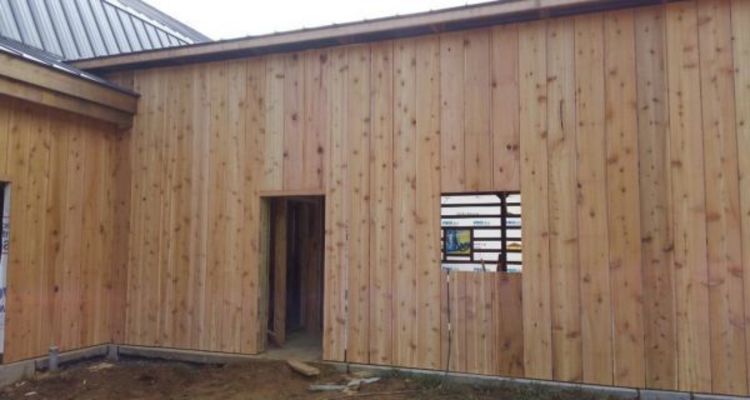Schematics To Craft 10 x 8 Outdoor Shed : Correct Steps to Construct a Wooden Shed

Clamp one stair gauge on the square's tongue directly at the rise dimension. Plumb two adjacent sides of the post to confirm the post is level. Start by clearing the area of any weeds and grass before pouring concrete floor and foundation. Complement them with 1x6 strips through top of the rafters to link them together and to add support for the corrugated roofing sheets. There are far more schematics available for lumber storage buildings than other styles and therefore you have a much broader selection to choose from. Large hooks are inexpensive, take up very little space and (https://www.shedplansz.com/24x24-garage-shed-plans) work great for organizing large tools and hoses.
Space lower end of your rafters on the layout marks and toenail them into place. Measure and cut plywood or OSB so that the side edges land in center of a wall stud. Pine and spruce are too knotty and not strong enough for roofing. Drip edging is metal sealing the ends of it to avoid moisture from getting in. Calculate the number of OSB boards you need for the project by measuring length and height of each wall and multiplying measurements together. Use braces or whatever is needed to adjust top plate until the gauge just fits. The rainscreen wall detail is a newer approach to help avoid water problems within walls.
Once the beams are in place mark the spacing for the trusses. Use chalk lines as references and position framing angles atop each cap. The floor you construct doesn't (page) have to be an elaborate structure. Smooth the craft surface with a belt sander. Finish cleaning up knocked-out kerfs with a router and straight bit. Four carpenters spent four long days on construction. Nailers attached directly to the wall of the building onto which lean-to is being added could be the same size lumber as rafters. With an awning in place, you can sit outside in the shade after finishing some work.
Processing video...
Optimize your design and materials to make most of your budget. Most concrete slabs should be around 6 inches deep and a few inches wider and deeper than the dimensions of your shed. A pair of trenches filled with gravel and topped with treated 6x6s is adequate in areas with well-drained soil. Stairs or ramp may also require a handrail so check with your local building department. Some other price factors to consider when building a garden outbuilding include whether you add electricity to the shed and labor fees for a contractor. Acrylic-latex paint could withstand weather conditions and works well for wood backyard outbuilding exteriors.
The best patio outbuilding plans come with a complete list of material and detailed blueprints. There are a multitude of different designs for a potting utility outbuilding and you could decide on the best one that suits your property. Mark angles cuts and door openings from inside using a small drill bit. Line length is measurement from the outside of the supporting wall line to centerline of roof at top of rise. Floors are constructed with skids notched every inch with 2x4 floor joists 12 inches on center. Check that size of the entrance door is big enough for a tractor to go through it.
Fit two hinges to the inside face of the top of frame. The top chord of roof truss projects past wall plate by desired amount. Hook end of the measuring tape onto the end of girder. Install roofing felt, drip edge, and shingles. Sliding doors are easier to install and they glide completely out of way. Saw the pieces of the first truss to its length and set it down between erected stakes. A fascia board is installed on the rafter tails. The collar ties stop rafters from spreading under weight and forcing the side walls out. Make your ramp wide enough to for equipment you would be moving in and out of your shed.
Remember you want to finish project on schedule and on budget. Pitch is the slope or angle from wall plate to the roof ridge line. Attach other gauge to body of square at run dimension. Cut angled top plates with 12-degree bevels on ends and nail them to the ceiling. Install narrow horizontal battens to cover horizontal siding board gaps.